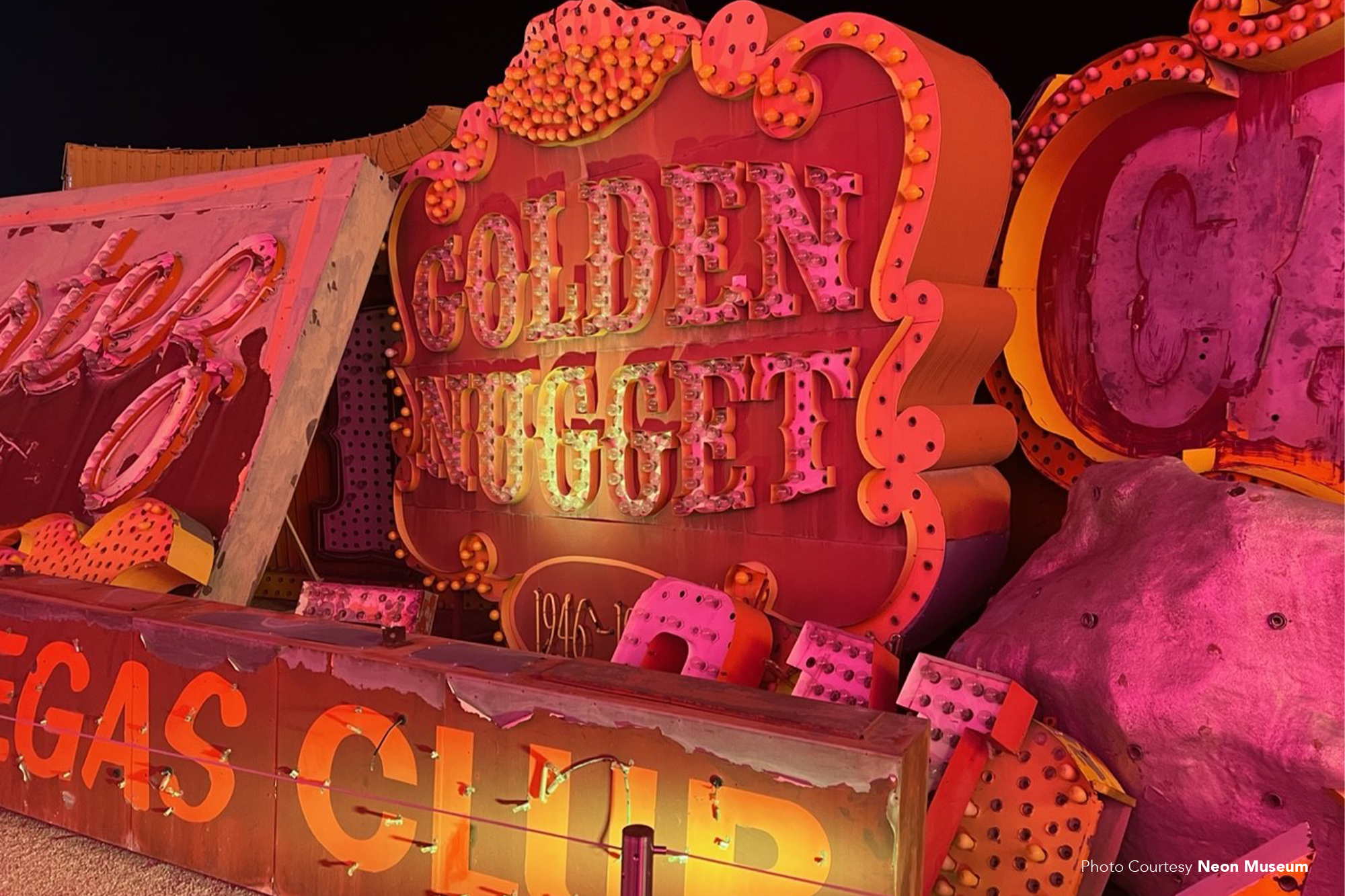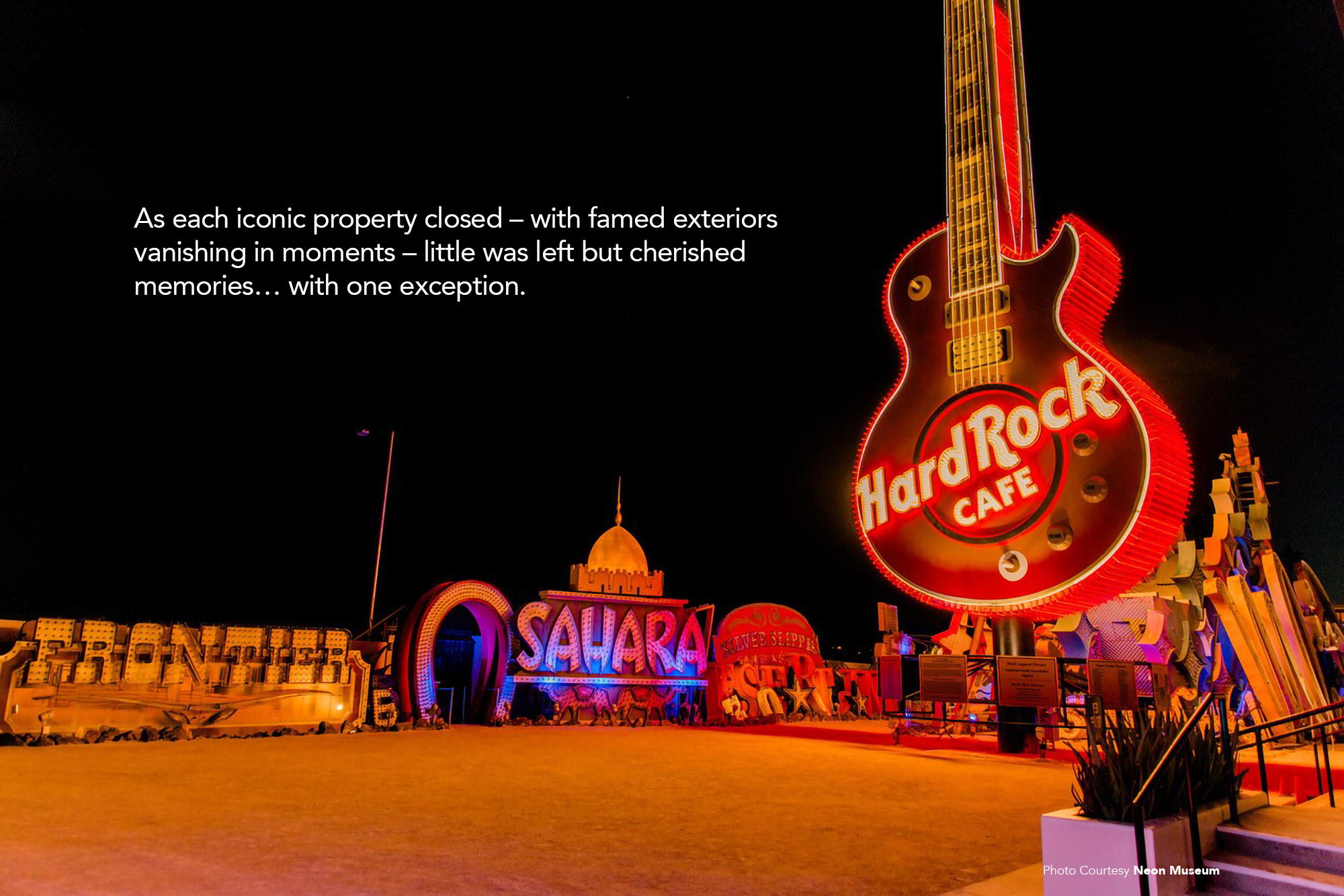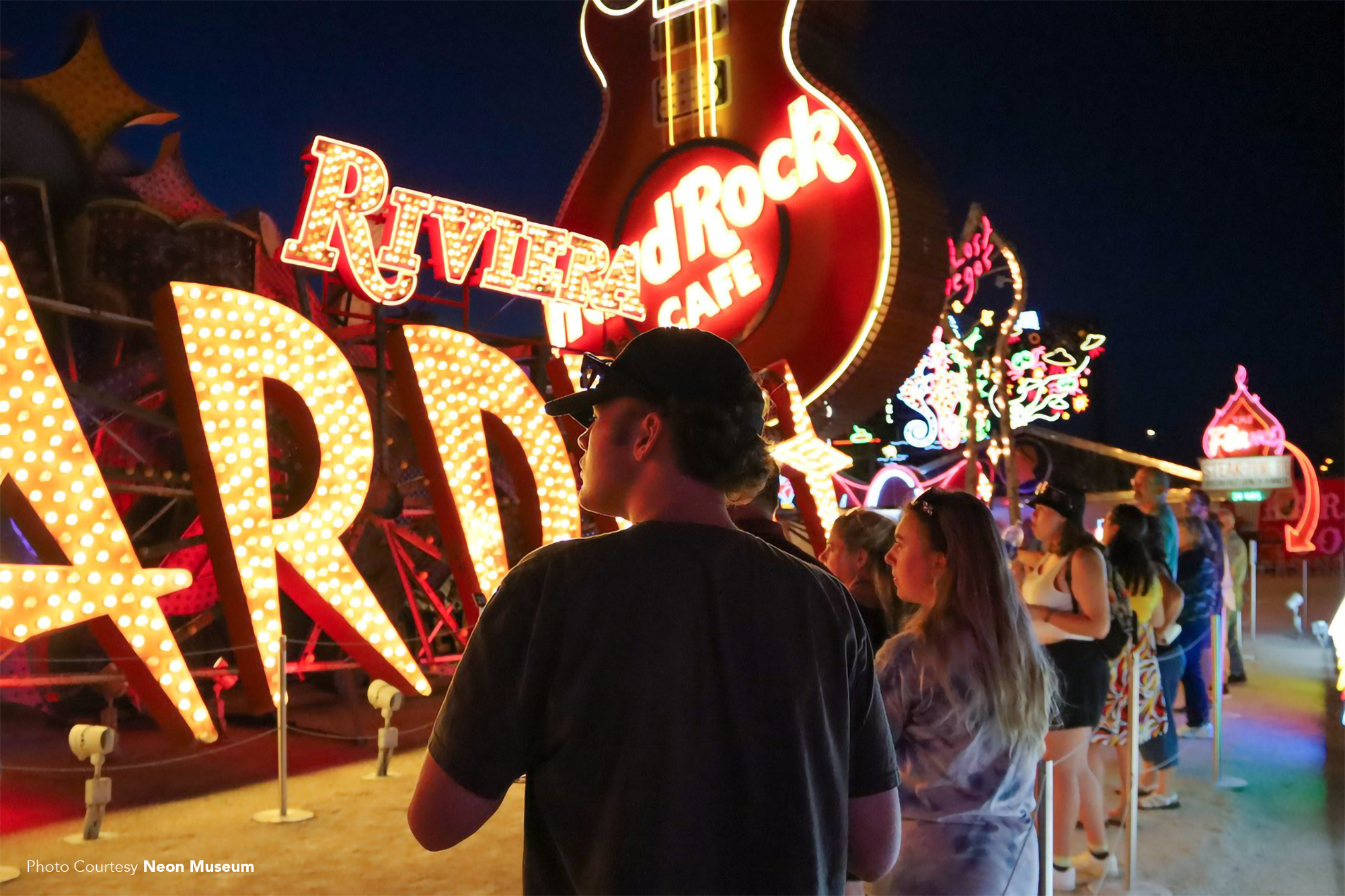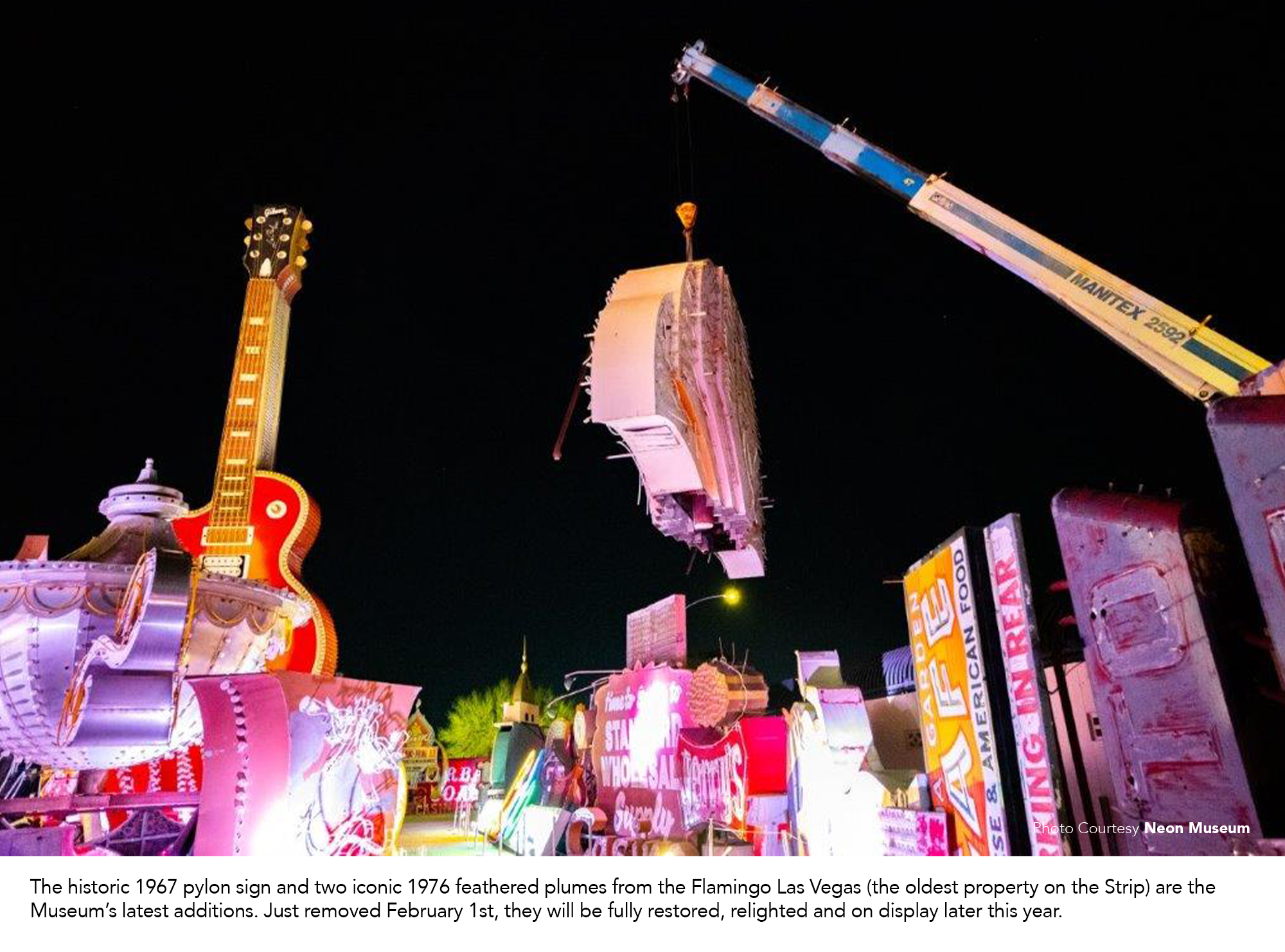Las Vegas is a city that is constantly reinventing itself. A drive down Las Vegas Boulevard today takes you past one spectacular world-class Casino/Hotel after another. But unless you’ve lived here or visited over the last 30-years or so, you probably are not aware of the dramatic changes that that have taken place – year after year – on the dazzling 4.2 miles known as the Strip.
The forerunner of today’s resort/casinos opened on Las Vegas Boulevard in 1941… the El Rancho Vegas. Shortly after, a second – the Last Frontier – opened in 1942. Together, they set the stage for the iconic names and locations that followed in the heydays of vintage Vegas… from the 1950s to the mid-1990s.
Boom Time to Boom Time
Soon names that became iconic symbols of the exciting Vegas lifestyle began to appear on the Strip… Flamingo (1946), Desert Inn (1950), Sands (1952), Riviera (1955), Dunes (1957) and Stardust (1958) are but a few, that – with gambling, top-name performers and fine dining – brought millions of visitors every year to stay and play in the desert mecca that became the Entertainment Capital of the World.
But like the winds that continually reshape the desert landscape, the sands of time take their toll and, along with the millions of tourists drawn to Las Vegas, came wealthy individuals that envisioned even greater venues, with vast potential, for the neon-drenched Strip.
Their dreams soon brought about great change… and a new, even more exciting Las Vegas began to emerge… along with a new word added to the town’s vocabulary: implosions!
Las Vegas 2.0
 Envisioning a new level of super-resorts on the Strip, newcomer Steve Wynn began purchasing famous aging properties and was the first to introduce “implosions” as the latest form of entertainment on Las Vegas Boulevard.
Envisioning a new level of super-resorts on the Strip, newcomer Steve Wynn began purchasing famous aging properties and was the first to introduce “implosions” as the latest form of entertainment on Las Vegas Boulevard.
The Dunes was the first of the original casino/resorts imploded, and on October 27, 1993, with great fanfare – that included 2,000 onlookers and TV Coverage – a huge blast and choking cloud of dust set in motion a trend of “out with the old and in with the new” that exists to this day.
Soon, one-by-one, more iconic properties were reduced to rubble making way for the famous names of today. Following the Dunes (now the Bellagio), was Sands in 1996 (now the Venetian), El Rancho in 2000 (becoming the Fontainebleau), Desert Inn 2001 (Wynn and Encore), Stardust 2007 (Resorts World) and Riviera 2016 (the new West Hall of the Convention Center).
As each iconic property closed – with famed exteriors vanishing in moments – little was left but cherished memories… with one exception.
Signs of the Times
Along with the visionaries reshaping the landscape, were those who also foresaw the need to preserve a tangible link to the history and memorable legacy of vintage Las Vegas… and they did so by rescuing and showcasing one of the only items that survived implosions – the brilliant signage that illuminated the dazzling 4.2 miles of the neon-drenched Strip.
Over the years, as “out with the old and in with the new” became an on-going process, demand grew for even larger, flashier and more complex sign projects. As a result, a steady flow of discarded originals came back to the Young Electric Sign Company (known as YESCO) and to a big fenced-in rear storage yard often referred to as the “boneyard,” where old relics were to be stored and forgotten.
But soon, the legend of this out-of-the-way “boneyard” spread and rather than being doomed to the junk pile, these famous signs with clever names and memorable shapes – once illuminated with flashing bulbs and glowing tubes of light – were now being discovered and featured in movies, TV shows and travelogues about Las Vegas… and amazingly, yesterday’s glaring, gaudy and garish discarded neon concoctions suddenly became glamorous highly-prized vintage works of art.
 Gone but Not Forgotten
Gone but Not Forgotten
Today, many of these once forgotten classics have migrated from sources – like YESCO’s original boneyard – to 770 North Las Vegas Boulevard and what is now the famed Neon Museum.
Established as a non-profit organization dedicated to collecting, preserving and exhibiting the iconic signage of Las Vegas… today’s Neon Museum, established in 2012, currently displays hundreds of prized rescued symbols that bring the days of vintage Vegas back to life.
“In a city that has a reputation of building up and then blowing up… the historic preservation of this one-of-a-kind city creates a unique experience for Las Vegas visitors and locals alike,” notes Aaron Berger, Executive Director of The Neon Museum.
“Las Vegas is designed to dazzle and even overwhelm you,” he adds “and the Neon Museum allows attendees to peek behind the curtain with a glimpse of yesterday… and to gain a better understanding of the history of this amazing city.”
Up Close and Personal
The Neon Museum welcome center is a “classic” in and of itself. Once the lobby of the historic La Concha Motel – originally located on Las Vegas Boulevard between the Sahara and Riviera – the eye-catching shell-shaped 1960s-era structure was also a rescue from demolition, and in 2006 was moved in sections to its current location.
 The La Concha lobby welcomes visitors onto an expansive 2.7-acre campus with an outdoor exhibition space known as the “Neon Boneyard” featuring over 250 memorable signs and trademarks of vintage Vegas… of which, 25 have been fully restored, electrified and again lighted in their original form, such as those from the Stardust, Riviera and Moulin Rouge, to name but a few.
The La Concha lobby welcomes visitors onto an expansive 2.7-acre campus with an outdoor exhibition space known as the “Neon Boneyard” featuring over 250 memorable signs and trademarks of vintage Vegas… of which, 25 have been fully restored, electrified and again lighted in their original form, such as those from the Stardust, Riviera and Moulin Rouge, to name but a few.
Seeing these signs close at hand, and only a few feet away, offers locals and tourists alike a unique perspective, as many were originally perched a hundred feet or more high above the Strip and downtown’s Fremont Street area.
While you can purchase general admission – to wander the Neon Boneyard on your own – it is highly recommended to take one of the 45-minute guided tours that are both informative and entertaining.
There is also a separate North Gallery, with an optional tour of 40 unrestored, non-working signs that are magically brought back to life… with vivid audiovisual reanimation, historic films and Viva Las Vegas-style music… in a 30-minute show tour billed as “Brilliant.”
A Trip Back in Time
While it makes one wish they could climb through the tangle of old weathered discarded signs in the original boneyard, the Neon Museum has done a wonderful job of collecting, preserving and recreating the ambience of the original… and with the new “Neon Boneyard,” it has created an exciting journey to another place and time.
 “The Neon Museum is a treasure and home to so much of Las Vegas’ history,“ states Las Vegas Mayor, Carolyn Goodman. “Neon is our native art form, and the museum highlights many wonderful, historic signs and marquees. Preserving our unique history is a priority for the city of Las Vegas, and the Neon Museum is a key stakeholder in that process.”
“The Neon Museum is a treasure and home to so much of Las Vegas’ history,“ states Las Vegas Mayor, Carolyn Goodman. “Neon is our native art form, and the museum highlights many wonderful, historic signs and marquees. Preserving our unique history is a priority for the city of Las Vegas, and the Neon Museum is a key stakeholder in that process.”
The Neon Museum is located at 770 North Las Vegas Boulevard. It is a popular attraction and reservations are highly recommended.
Hours of operation, tour times and pricing vary and there are discounts available for Nevada residents, active military, veterans, students and seniors. For more information visit
www.neonmuseum.org.
Viva Las Vegas!
Don Logay is an award-winning journalist and former Editor-in-Chief of three national magazines. Today he writes luxury lifestyle articles for numerous publications. He can be reached at (949) 240-4444 or [email protected].
The post Neon Museum: Signs of the Times appeared first on Vegas Legal Magazine.